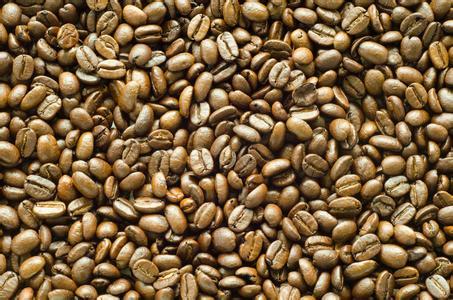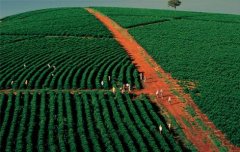A brief introduction to the treatment method of grinding degree and baking degree of Indonesian West Java boutique coffee beans with strong flavor

About 90% of Indonesian coffee is Romda beans, about 6.8 million bags a year, and less than 10% of beans are Arabica coffee. Sumatra is the largest producer of Indonesian coffee. Well-known coffee-growing areas are mainly concentrated in the northern mountains, including Aceh in the northernmost province of Aceh and Sumatera Utara in North Sumatra. Including the well-known Mantenin Mandheling, Lin Dong Lintong, Jiayushan Gayo Mountain.
The name of Mandheling coffee is said to come from the local people, mandailing. The producing areas mostly point to the mountains in the north of Lake dopa, and the specific producing areas need to be verified.
Lintong coffee comes from the foothills around Lake Lake Toba in North Sumatra, Sumatra's largest volcanic lake, and its name comes from the small town called lintong in the southwest of Lake dopa.
Gayo mountain Coffee from Takengon, Takangong, Aceh Province and the mountains around Lake Lake Tawar.
Medan Medan and Padang Padang are important cities involved in coffee. They are the capital of North Sumatra and West Sumatra respectively, and they are also the most densely populated areas in Sumatra. The former is an important distribution center for Sumatra coffee exports, while the latter is also a well-known coffee production around, such as Ankola.
Coffee from Sumatra includes Arabica and Robusta, which is usually grown at high altitudes in the mountains, while robusta is grown in the lowlands. Coffee processing is famous for the traditional "wet planing", Giling Basah,wet-hulled, and the special treatment is partly due to the local humid climate.
Java coffee is full-bodied and full-bodied, with clear, high-quality acidity, high balance, and sometimes nutty taste. In terms of appearance and quality, Java coffee is excellent, just like a woman's vaguely charming, charming and just right, memorable.
Each caffeine variety has a different origin and has its own strong character, such as the masculine Mantenin, which resembles the character of an iron and steel man; mellow, fragrant blue mountain coffee, and gentle women are addicted to missing. Java Coffee, which has always been light and fragrant, is suitable for those who like light sex. Such people do not want to drink coffee as a sitting thing, from sour, sweet, bitter, astringent experience what profound philosophy of life, just want to simply drink a cup of delicious coffee, a cup of hot Java coffee, let these people realize that "the realm of life is rich and quiet." Quiet, because of getting rid of the temptation of external fame and gain; rich, because of having the treasure of the inner spiritual world. The happiness of life is to reap such an incisive interpretation of the realm.
Java coffee
Java coffee
The sour, bitter and sweet tastes of Java coffee match well. Unique fragrance, after drinking, the aroma fills the whole mouth. Exhale the aroma from the mouth again from the nose, the smell is very full. Maybe you will find it too overbearing, because it will quickly occupy your taste buds, your mind and even your soul. Why resist it? The life we live in is full of sour, sweet, bitter and astringent, so let the smell of coffee take away everything in the world. What we enjoy is not just a cup of coffee, but also the quiet moment that coffee brings to us.
Java has a mild, humid and diverse climate that makes it a harvest season all year round, with different kinds of coffee ripening at different times. What they grow is the unique quality of Java coffee beans, the coffee ground by this coffee bean, rich taste, endless aftertaste, can be called high-quality coffee. Many people equate "Java coffee" with "high quality" and "good taste".
The world coffee is divided into two series, one is the "hard" coffee represented by Brazil, which has a strong flavor, and the other is the "soft" coffee represented by Java coffee, which has a light flavor. The difference lies in the altitude of the producing area and the planting method, the coffee is planted in the hilly red soil is more extensive, Java is produced in the mountain black soil intensive cultivation.
Java coffee has a kind of bitter experience, it is as astringent as life, but bitterness is necessary in life, and the last fragrance at the root of the tongue is a thorough recollection of the past. Looking back on the hardship in the past, I will feel its sweetness and warmth even more, and I want to let the mood stop in the consciousness that begins to awaken for a long time. Suffering is pain, clear and quiet, the last fragrance has become a spiritual victory.
Java produces only a small amount of Arabica beans, most of which were imported from Africa after the rust disaster. This coffee has a strong bitter taste after roasting, but its aroma is extremely light. Although it has low acidity and delicate taste, it is rarely used for direct drinking. It is often used to mix mixed coffee, or to make instant coffee in Asian countries that produce coffee. Indonesia is a very noteworthy one. Indonesia is an island country in the Indian Ocean, the islands are distributed on both sides of the equatorial line, of which three islands: Java, Sumatra and Sulawesi produce the world's important coffee. In the mid-17th century, the Dutch brought coffee trees to Ceylon (Sri Lanka) and Java, Indonesia. In the 18th century, Indonesia became a major producer of coffee, and almost all of its high-quality Arabica coffee was supplied to Europe. But by the 19th century, coffee rust, which appeared in Ceylon in 1869, also affected Indonesia. By 1877, most of the coffee fields on the Indonesian islands had been damaged by rust, and the Dutch had to import other coffee varieties from Africa, namely Romsda coffee. It is more resistant to diseases and insect pests, but its quality is inferior.
Important Notice :
前街咖啡 FrontStreet Coffee has moved to new addredd:
FrontStreet Coffee Address: 315,Donghua East Road,GuangZhou
Tel:020 38364473
- Prev

A brief introduction to the planting market price of nutty boutique coffee beans in West Java, Indonesia
Java Coffee, which has always been light and fragrant, is suitable for those who like light sex. Such people do not want to drink coffee as a sitting thing, from sour, sweet, bitter, astringent experience what profound philosophy of life, just want to simply drink a cup of delicious coffee, a cup of hot Java coffee, let these people realize that the realm of life is rich and quiet. Be quiet,
- Next

A brief introduction to the description of flavor and aroma characteristics of high-quality Guatemalan coffee beans
Antigua coffee is popular with most coffee lovers only because of its distinctive aroma. Because it is planted in the hills of volcanoes, it can retain its own characteristics more than Costa Rica, the main reason is that it has more geographical and climatic advantages than Costa Rica. Guatemala is located in the tropics, but because of its high altitude, Qi
Related
- Detailed explanation of Jadeite planting Land in Panamanian Jadeite Manor introduction to the grading system of Jadeite competitive bidding, Red bid, Green bid and Rose Summer
- Story of Coffee planting in Brenka region of Costa Rica Stonehenge Manor anaerobic heavy honey treatment of flavor mouth
- What's on the barrel of Blue Mountain Coffee beans?
- Can American coffee also pull flowers? How to use hot American style to pull out a good-looking pattern?
- Can you make a cold extract with coffee beans? What is the right proportion for cold-extracted coffee formula?
- Indonesian PWN Gold Mandrine Coffee Origin Features Flavor How to Chong? Mandolin coffee is American.
- A brief introduction to the flavor characteristics of Brazilian yellow bourbon coffee beans
- What is the effect of different water quality on the flavor of cold-extracted coffee? What kind of water is best for brewing coffee?
- Why do you think of Rose Summer whenever you mention Panamanian coffee?
- Introduction to the characteristics of authentic blue mountain coffee bean producing areas? What is the CIB Coffee Authority in Jamaica?

